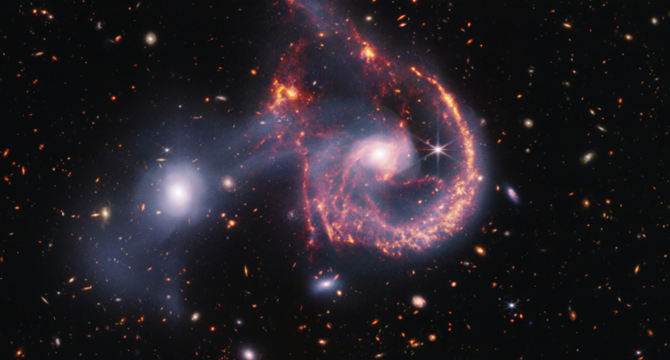Brighter Side of News
1M
209

Image Credit: Brighter Side of News
Previously unseen phenomenon spotted in galaxy 12.9 billion light-years away
- The James Webb Space Telescope has revolutionized the study of the universe by detecting near-infrared light, unveiling details of distant galaxies previously considered unobservable.
- Recent findings have not only mapped ancient galaxies' structures but also revealed unique features that challenge existing models of early cosmic development.
- One galaxy, 12.9 billion light-years away, dubbed GS-NDG-9422, displays a peculiar light pattern where gas shines brighter than stars, indicating a rare transitional stage in galaxy evolution.
- Spectral data analysis of GS-NDG-9422 suggests stars with temperatures exceeding 140,000 degrees Fahrenheit, significantly hotter than those typically observed.
- The presence of a Balmer jump in 9422's spectrum, a phenomenon indicating high-energy young stars influencing surrounding gas, adds to its uniqueness at high redshifts.
- Extreme temperatures in 9422 enable less common emissions such as two-photon and free-bound emissions to rival or surpass stellar light, providing insights into the galaxy's extraordinary nature.
- Galaxy 9422's exotic stellar populations may help understand the transition of galaxies from primordial to familiar forms, shedding light on the universe's early evolution.
- The study of 9422 in the Monthly Notices of the Royal Astronomical Society explores its potential brief, intense phase of star formation that outshines its stellar emissions.
- Astronomers are investigating if similar conditions in 9422 exist in other early universe galaxies, aiming to reshape our comprehension of cosmic history's first billion years.
- The quest for new discoveries with the James Webb Space Telescope in this inaccessible time in the universe points towards exciting times ahead for cosmic exploration.
Read Full Article
12 Likes
For uninterrupted reading, download the app